Is Taro Milk Tea Healthy? Plus a Recipe
Taro Milk Tea is often served as a sweetened tea beverage and is very common in Asia. But, it’s also becoming popular in the West including the United States. In this blog post, find out if taro milk tea is healthy or not, plus a simple recipe.
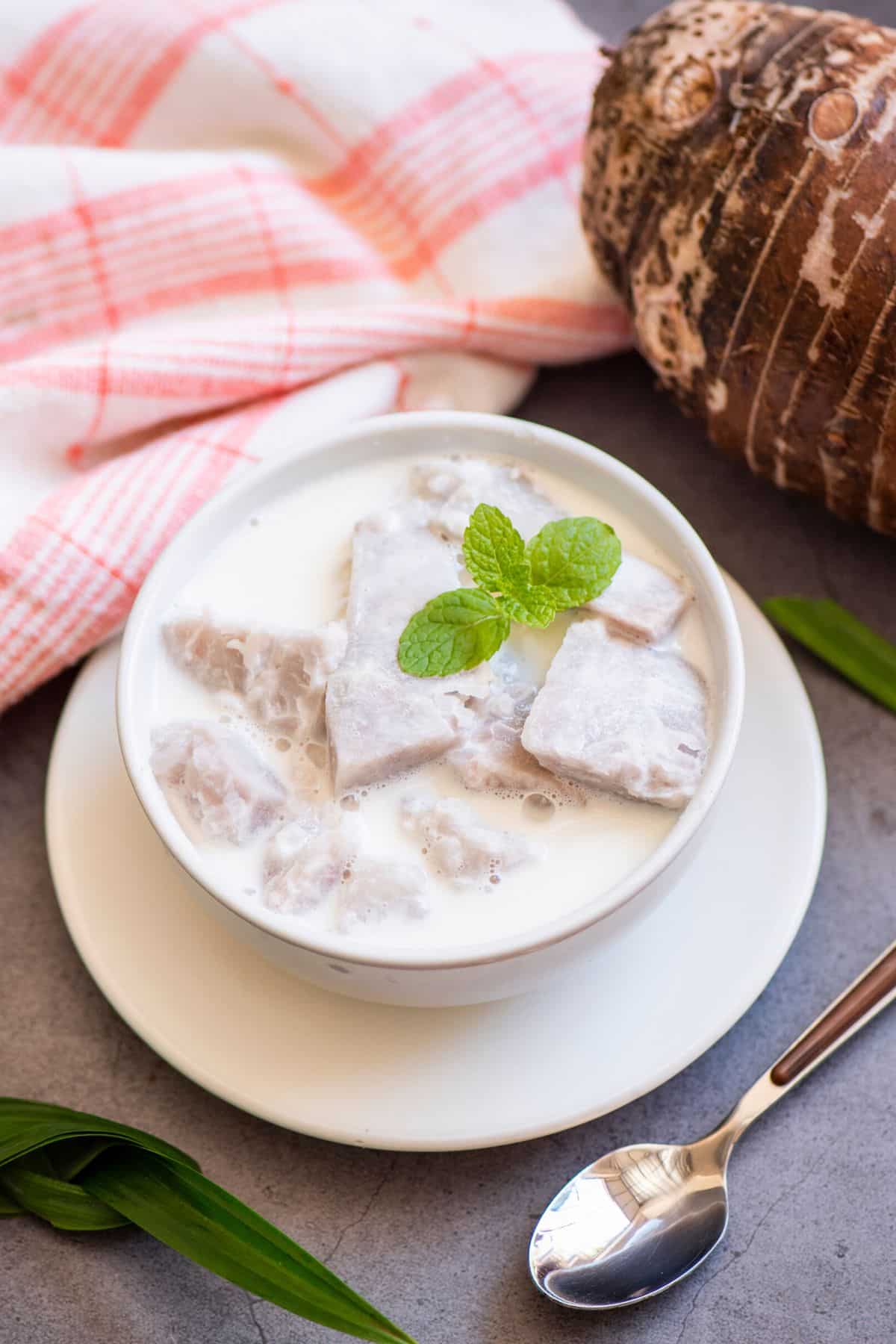
Taro milk tea is a type of flavored tea made with a combination of taro root, milk, and tea (and sometimes boba or chewy tapioca pearls). It is often sweetened with sugar or other sweeteners.
You can find it served throughout Asia as Taro Bubble Tea served in bubble tea shops (also called boba shops).
What is Taro?
Taro root is a starchy root vegetable that is native to Southeast Asia and is commonly used in savory and sweet dishes. It has a purple-gray skin and white flesh or pink flesh. It’s very similar to a purple yam or purple sweet potatoes.
To make Taro Milk Tea, milk is combined with stepped black tea or green tea, whole milk, along with a sweetener and boba (cooked tapioca pearls). Taro boba milk tea is often served cold or over ice.
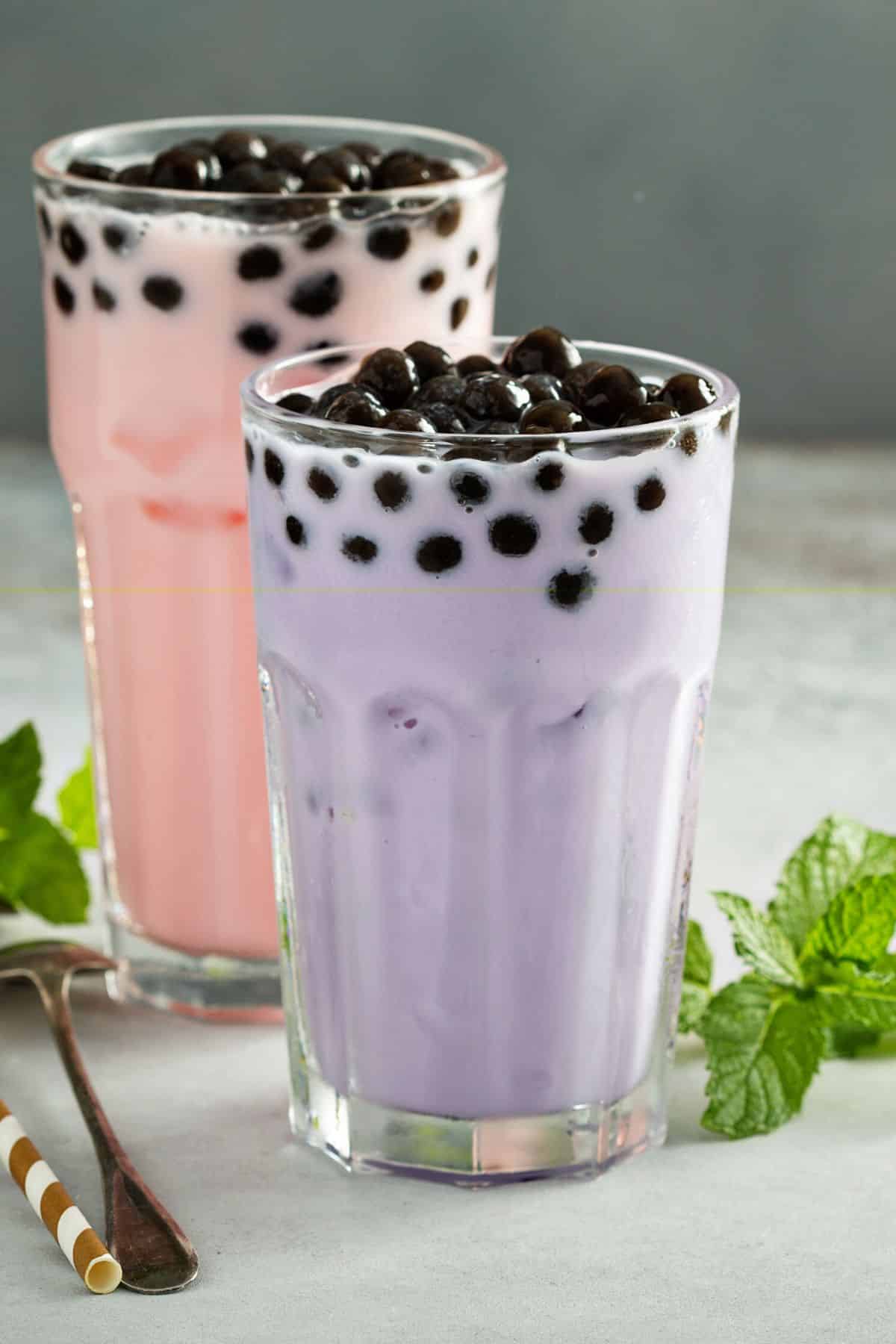
Taro Milk Tea Nutrition
Plain taro root is high in carbohydrates and low in protein and fiber. It is also high in calories, with about 112 calories per 100 grams. Taro root is a good source of vitamins and minerals, including vitamin C, potassium, and manganese.
Taro milk tea is often sweetened with sugar or other sweeteners as a main ingredient, which can add extra calories and contribute to an increased intake of added sugars.
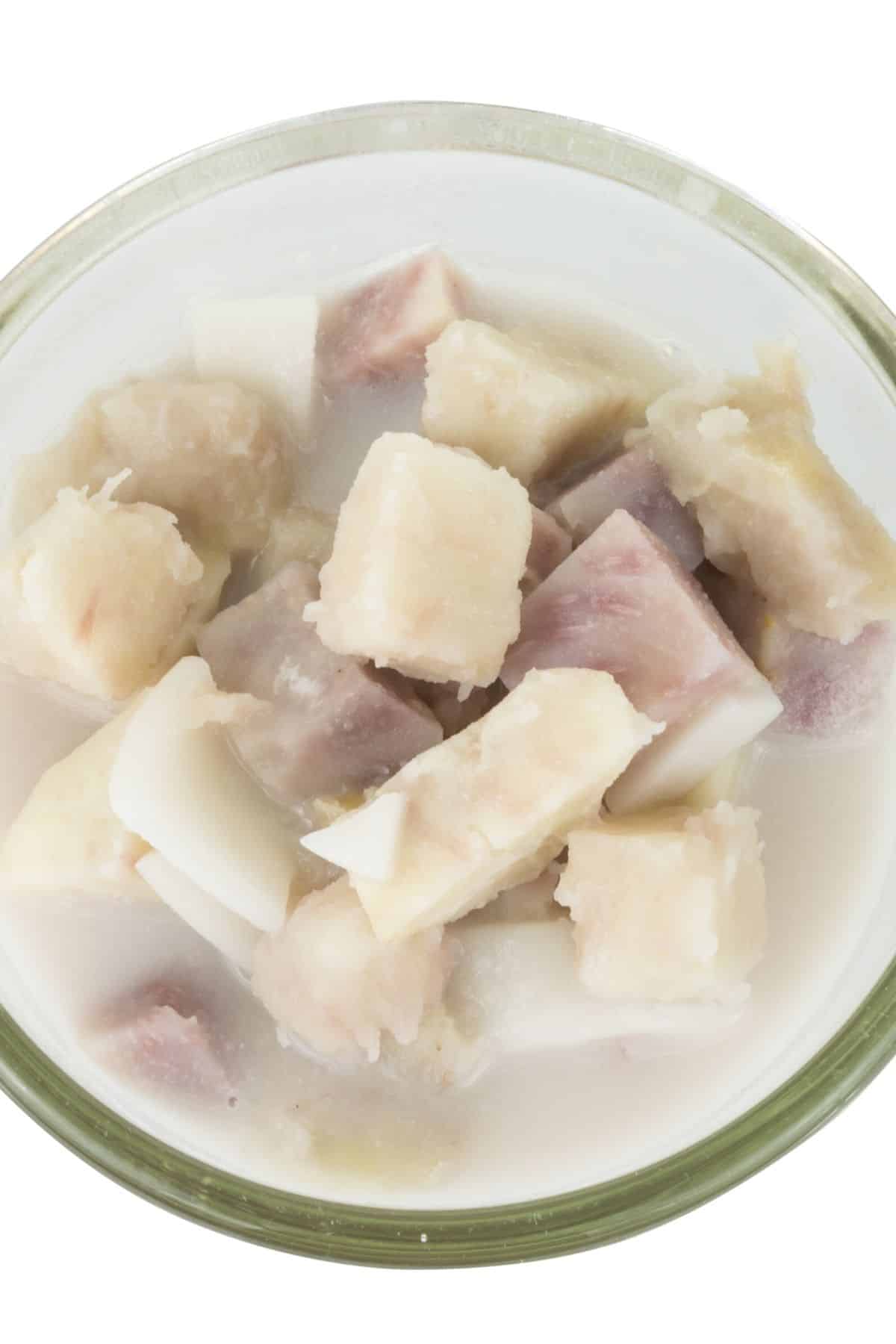
Health Considerations
Consuming taro root and milk can provide some potential health benefits. Taro root is a good source of vitamins and minerals, and milk is a good source of protein and calcium. It’s a good spruce of potassium and a good source of fiber if you use real taro.
However, taro milk tea should be consumed in moderation due to its high calorie and sugar content. Consuming taro milk tea regularly or in large amounts could contribute to weight gain and an increased risk of other health problems, such as diabetes and heart disease.
To make taro tea healthier, consider using fresh taro root or fresh taro paste as opposed to taro powder. And, try to keep the amount of sugar low.
Recipe FAQs
Yes, it is possible to make taro milk tea dairy-free by using a plant-based milk alternative instead of cow’s milk. There are several types of plant-based milks available, including soy milk, almond milk, oat milk, and coconut milk, to name a few. These milks can be used in place of cow’s milk to make taro milk tea that is dairy-free but still with a creamy texture.
Taro milk tea is a tasty and refreshing beverage, but it is not necessarily a healthy choice due to its high calorie and sugar content. It can also have quite a bit of caffeine, even as much caffeine as a cup of coffee. Taro root and milk can provide some potential health benefits, but it is important to consider the overall nutritional content of taro milk tea and to consume it in moderation as part of a well-balanced diet.
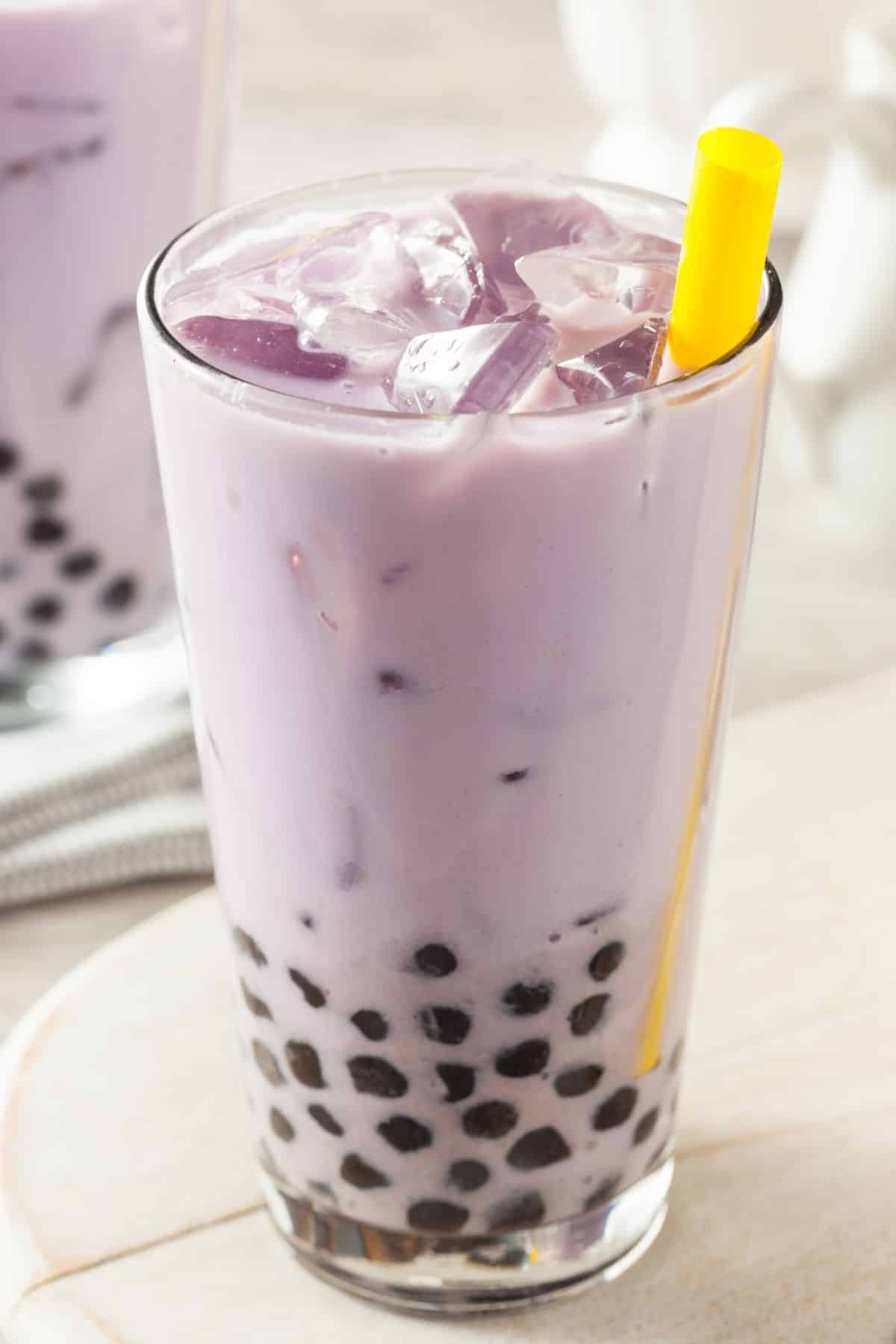
Don’t Miss These Homemade Tea Recipes!
I hope you make this recipe! If you do, please leave a comment and a starred review below.
And, consider following me on social media so we can stay connected. I’m on Facebook, Pinterest, Instagram, and YouTube!
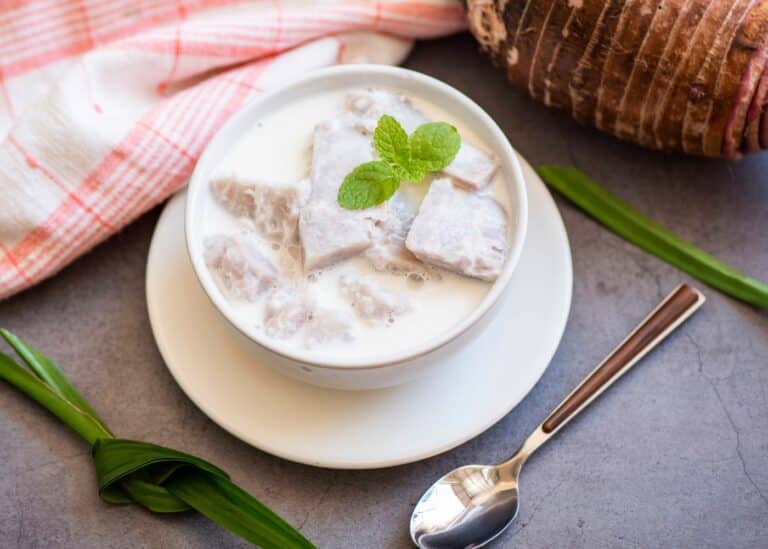
Homemade Taro Milk Tea Recipe (Without Boba)
Here’s a homemade version of Taro Milk Tea that is healthy and satisfying. This version is made without boba or tapioca pearls.
- Total Time: 50 minutes
- Yield: 2 servings
Ingredients
- 1 cup taro root, peeled and chopped
- 1 cup unsweetened almond milk
- 2–3 black tea bags or 1 teaspoon loose leaf black tea
- 2–3 tablespoons sweetener (such as sugar, honey, or a sugar substitute)
Instructions
- In a medium saucepan, combine the taro root with enough water to cover. Bring to a simmer and then lower the heat and cover with a lid. Boil the taro root in water until it is tender, about 15-20 minutes. Drain the water and transfer the taro root to a blender or food processor.
- Add 1/2 cup of almond milk to the taro root and blend until smooth. You may need to add more milk to achieve a smooth consistency.
- While the taro root is cooking, brew the tea according to the package instructions. If using loose leaf tea, steep the tea in hot water for 3-5 minutes. If using tea bags, steep the tea in hot water for 3-5 minutes and then remove the bags.
- Add the brewed tea to the taro root mixture and stir to combine.
- Add 2-3 tablespoons of sweetener to taste and stir to combine. Adjust the amount of sweetener as needed to suit your taste preferences.
- Serve the taro milk tea over ice or chilled. You can garnish with a sprig of mint, if desired.
Notes
- If you aren’t on a dairy-free diet, you can use regular milk in this recipe.
- You can use decaffeinated black tea if you want a decaf version.
- Prep Time: 10 minutes
- Cook Time: 40 minutes
- Category: Beverage
- Method: Stovetop
- Cuisine: Asian-inspired
- Diet: Gluten Free
Nutrition
- Serving Size: 1/2 of recipe
- Calories: 143
- Sugar: 14.3 g
- Sodium: 102.2 mg
- Fat: 1.6 g
- Saturated Fat: 0 g
- Carbohydrates: 30.6 g
- Fiber: 2.2 g
- Protein: 1.6 g
- Cholesterol: 0 mg
Don’t forget to join my newsletter list to get exclusive clean eating recipes and tips. The newsletter is 100% free with no spam; unsubscribe anytime.
About the Author: Carrie Forrest has a master’s degree in public health with a specialty in nutrition and is a certified holistic nutritionist. She is a top wellness and food blogger with over 5 million annual visitors to her site. Carrie has an incredible story of recovery from chronic illness and is passionate about helping other women transform their health. Send her a message through her contact form.


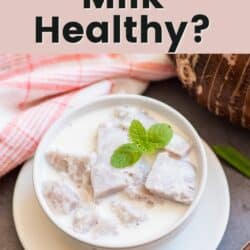

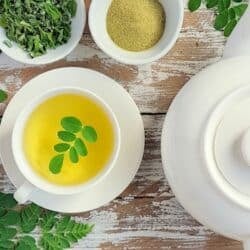






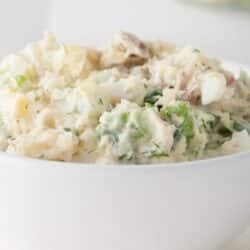
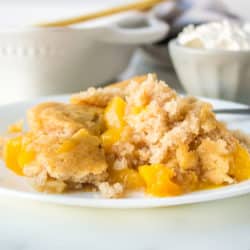








Such a fun drink to make at home!